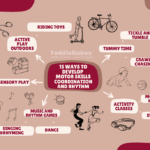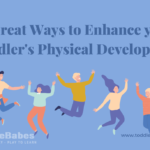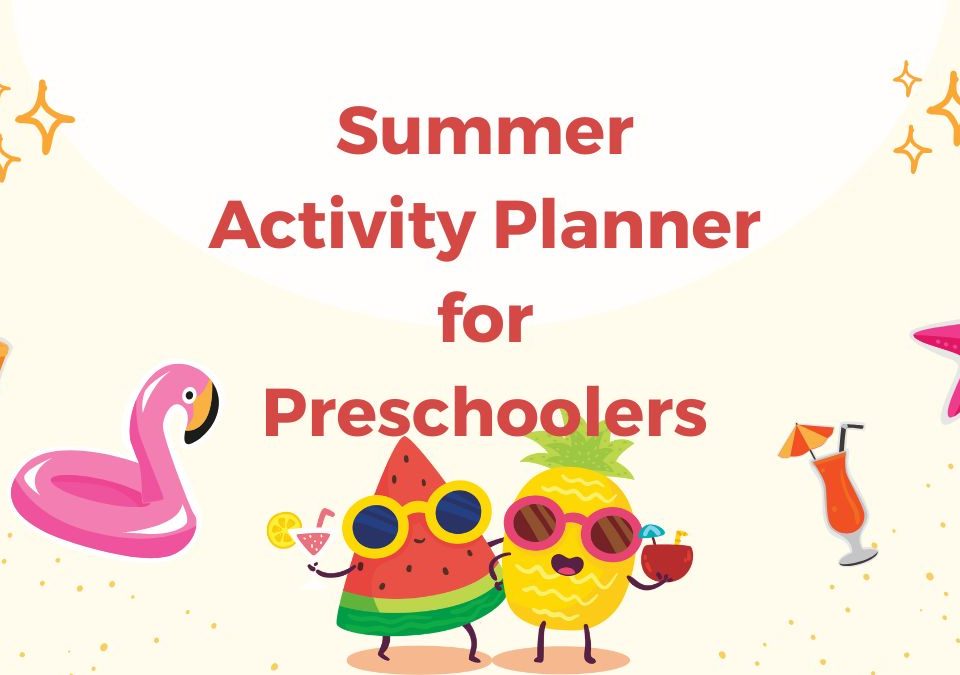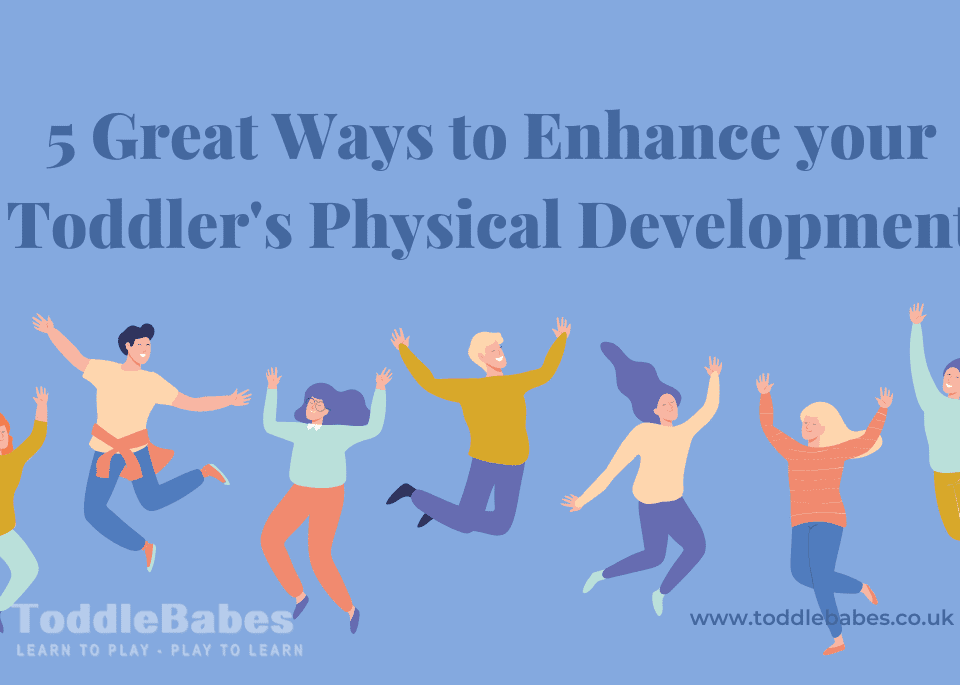
15 Easy Ways to Enhance Motor Skills, Coordination, and Rhythm

5 Great Ways to Enhance your Toddler’s Physical Development

Enhancing Balance and Coordination in Toddlers
As toddlers grow and begin to explore the world around them, the development of balance and coordination becomes a crucial aspect of their physical development. The ability to maintain balance and coordinate movements lays the foundation for future motor skills and physical activities. By engaging in activities that promote balance and coordination, toddlers can enhance their overall development and set themselves on a path to success. In this article, we will explore various activities that are specifically designed to foster balance and coordination in toddlers.
Walking on Different Surfaces
Encourage your toddler to walk on different surfaces, such as grass, sand, or textured mats. Walking on uneven surfaces challenges their balance and coordination, as they learn to adapt their movements to maintain stability. These activities help strengthen their leg muscles, improve proprioception (awareness of body position), and enhance their overall balance.
Balancing Games
- Set up simple balancing games using foam pads, balance beams, or stepping stones. Encourage your toddler to walk or crawl across these objects, challenging their ability to maintain balance. As they engage in these games, they develop core strength, fine-tune their balance skills, and improve their coordination. Setting up simple balancing games for your toddler is a fantastic way to enhance their balance, coordination, and core strength. By introducing foam pads, balance beams, or stepping stones, you provide a fun and engaging environment that challenges their ability to maintain balance. Here’s how you can set up and encourage your toddler to participate in these balancing games:
- Foam Pad Balancing: Place foam pads on the floor and encourage your toddler to walk or crawl across them. The soft and cushioned surface of the pads requires them to adjust their body movements and weight distribution to maintain balance. As they navigate across the foam pads, they develop a stronger sense of proprioception, improve their core strength, and refine their balance skills.
- Balance Beam Challenge: Create a makeshift balance beam using a sturdy board or even a piece of tape on the floor. Encourage your toddler to walk or crawl along the beam, carefully placing one foot in front of the other. This activity requires concentration, coordination, and balance control. Start with a wider and lower beam and gradually progress to a narrower and higher one as their skills improve. Walking on balance beams is an effective activity for improving balance, stability, and coordination in toddlers. Consider these tips to create a safe and engaging experience:
- Simple Balance Beams: Set up low and secure balance beams using taped lines on the floor or foam beams. Encourage your child to walk on the line, maintaining balance and stability. Start with short distances and gradually increase the challenge as their confidence grows.
- Assistance and Supervision: Offer a helping hand or provide a stable support structure, such as a handrail or your hand, to assist your child initially. As they gain confidence and improve their balance, gradually reduce assistance and allow them to walk independently.
- Fun Challenges: Introduce fun challenges like walking backwards, sidestepping, or walking with objects (e.g., balancing a bean bag on their head or holding a toy) to further enhance balance and coordination skills.
- Stepping Stone Path: Arrange stepping stones, such as flat objects or cushions, in a path on the floor. Encourage your toddler to step from one stone to another, maintaining balance and stability. This activity challenges their spatial awareness, coordination, and balance control as they navigate through the uneven surface. You can also incorporate colours or numbers on each stone for an additional educational element.
- Obstacle Course Balancing: Combine balancing activities with an obstacle course setup. Incorporate foam pads, balance beams, and stepping stones along with other age-appropriate obstacles like tunnels or low hurdles. Create a sequence for your toddler to crawl, walk, or hop across these elements while maintaining balance. This comprehensive approach to balancing games helps improve their overall coordination, motor planning, and agility.
- Sensory Balancing: Enhance the balancing experience by incorporating sensory elements. Place different textures or materials on the foam pads or balance beams, such as fabric, sandpaper, or bubble wrap. Encourage your toddler to explore and feel these textures while maintaining their balance. This sensory stimulation further engages their senses and contributes to their sensory integration and motor skill development.
- Parent-Assisted Balancing: Support your toddler as they engage in balancing activities. Provide a helping hand or stabilize their body if needed, especially when they are attempting more challenging tasks. Your guidance and support will instil confidence in them and help them gradually develop their balance and coordination skills.
Always ensure a safe environment for balancing games by clearing the surrounding area of any hazards and ensuring proper supervision. Use age-appropriate equipment and modify the difficulty level according to your toddler’s abilities. Remember, the focus should be on fun, exploration, and gradual progress rather than perfection.
By incorporating these simple balancing games into your toddler’s playtime, you provide them with valuable opportunities to refine their balance and coordination, and core strength. These activities not only enhance their physical development but also promote concentration, body awareness, and motor planning. So, let the balancing games begin, and watch your little ones grow in confidence and skill as they navigate their way to success!
Riding Toys
Riding toys, such as tricycles or ride-on toys, provide an enjoyable way for toddlers to develop coordination and balance. Introduce riding toys such as balance bikes, tricycles, or scooters to help your toddler improve their coordination skills. Riding toys require them to coordinate their leg movements, steer, and maintain balance. Start with stable and low-lying options and gradually progress to more challenging ones as your toddler’s skills develop.
Consider the following suggestions:
- Age-Appropriate Choices: Select riding toys that are suitable for their age and size. Tricycles with stable structures, low centre of gravity, and large pedals are ideal options for toddlers.
- Support and Guidance: Initially, support your child by holding onto the tricycle or providing a gentle push. Gradually allow them to practice pedalling and steering independently as their skills progress. Ensure a safe environment, such as a flat surface away from traffic or hazards.
Dance and Movement Activities
- Engaging your toddler in dance and movement activities can be a fun and effective way to promote their rhythmic movements, balance and coordination skills. By encouraging them to follow simple dance routines, mimic animal movements, or play games like “Simon Says,” you provide them with opportunities to develop body awareness, coordination, and rhythm. Let’s explore these activities in more detail:
- Dance Routines: Teach your toddler simple dance routines with easy-to-follow steps. Use age-appropriate music and demonstrate the movements yourself, breaking them down into smaller parts. Encourage your toddler to imitate your movements and gradually build up to the full routine. Dancing helps them develop body awareness, as they learn to control and coordinate their movements with the rhythm of the music.
- Mimicking Animal Movements: Invite your toddler to mimic animal movements through dance and play. You can suggest movements like “Let’s hop like a bunny” or “Can you slither like a snake?” Encourage them to imitate the movements and explore different ways of moving their bodies. This activity not only promotes coordination but also sparks their creativity and imagination.
- “Simon Says”: Play the classic game of, “Simon Says” with your toddler, incorporating movements and actions that require coordination. Start with simple instructions like “Simon says touch your nose” or “Simon says clap your hands.” Gradually introduce more complex movements such as “Simon says hop on one foot” or “Simon says spin around.” This game helps improve listening skills, body coordination, and the ability to follow directions.
- Scarf Dancing: Provide your toddler with colourful scarves or ribbons and encourage them to move to the rhythm of the music. They can wave the scarves in different directions, twirl them in the air, or create flowing movements. This activity promotes hand-eye coordination, spatial awareness, and creativity while adding an element of visual beauty to their movements.
- Freeze Dance: Play lively music and encourage your toddler to dance freely. Pause the music at random intervals and call out “Freeze!” When the music stops, your toddler has to freeze in their current position. This game helps develop body control, as they learn to stop their movements instantly. It also encourages them to explore different movements and experiment with balance and coordination.
- Follow the Leader: Take turns being the leader and encourage your toddler to imitate your movements as you dance around the room. Start with simple movements like walking, jumping, or spinning, and gradually introduce more challenging actions. This activity enhances coordination, as your toddler tries to match your movements and keep up with the rhythm.
Remember to create a supportive and non-judgmental environment where your toddler feels comfortable exploring and expressing themselves through movement. Celebrate their efforts and provide positive reinforcement to boost their confidence.
Dance and movement activities not only promote physical coordination but also contribute to emotional expression, creativity, and cognitive development. They allow your toddler to develop body awareness, rhythm, balance and coordination skills in an enjoyable and interactive way. So, put on some music, encourage your toddler to move their body, and watch as they develop their coordination and rhythm while having fun!
Yoga and Stretching
- Incorporate simple yoga poses and stretching exercises into your toddler’s routine. Yoga poses, such as the tree pose or the aeroplane pose, improve balance and coordination while stretching exercises enhance flexibility and body control.
Incorporating simple yoga poses and stretching exercises into your toddler’s routine can have numerous benefits for their physical development. Yoga poses help improve balance and coordination while stretching exercises enhance flexibility and body control. Here’s how you can introduce these activities to your toddler:
- Tree Pose: Guide your toddler to stand tall with their feet together. Encourage them to lift one foot off the ground and place it against the opposite leg, either below or above the knee. Assist them in finding their balance and holding the pose for a few seconds. The tree pose strengthens the leg muscles, improves balance, and enhances body awareness.
- Aeroplane Pose: Have your toddler stand with their feet hip-width apart. Help them extend their arms straight out to the sides, parallel to the ground. Instruct them to slowly lean forward while lifting one leg behind them, keeping their arms and standing legs aligned. This pose improves balance, and coordination, and strengthens the core muscles.
- Forward Fold: Invite your toddler to stand with their feet shoulder-width apart. Encourage them to slowly bend forward from the hips while keeping their knees slightly bent. Let their arms hang freely towards the ground or touch the floor if they can comfortably reach them. This pose stretches the hamstrings, calves, and back muscles while promoting flexibility.
- Cat-Cow Pose: Guide your toddler to come down onto all fours, with their hands under their shoulders and knees under their hips. Instruct them to arch their back and look up, like a stretching cat. Then, encourage them to round their back, tuck their chin towards their chest, and pull their belly button in, like a stretching cow. This pose improves spine flexibility and strengthens the core muscles.
- Butterfly Pose: Have your toddler sit on the floor and bring the soles of their feet together. Encourage them to hold their ankles or feet and gently flap their legs up and down, imitating butterfly wings. This pose stretches the inner thighs and hips while promoting flexibility.
- Child’s Pose: Guide your toddler to kneel down and sit back on their heels. Instruct them to slowly bend forward, lowering their torso towards the ground, and rest their forehead on the floor or on a cushion. Encourage them to extend their arms forward or rest them alongside their body. This pose stretches the back, shoulders, and hips while promoting relaxation.
- Stretching Games: Make stretching fun by incorporating games and storytelling. For example, you can pretend to be an animal and stretch like a snake, a cat, or a frog. Encourage your toddler to imitate the movements and stretch their bodies accordingly. This playful approach makes stretching more engaging and enjoyable for your little one.
Always ensure that your toddler practices yoga poses and stretches under adult supervision, in a safe and comfortable environment. Encourage them to listen to their bodies and avoid any discomfort or strain during the exercises.
Incorporating simple yoga poses and stretching exercises into your toddler’s routine not only enhances their balance and coordination, and flexibility but also promotes body awareness and mindfulness. These activities provide a foundation for a healthy and active lifestyle, fostering physical well-being and promoting a positive relationship with their bodies. So, embrace the benefits of yoga and stretching, and enjoy these mindful moments of movement with your toddler.
Obstacle Courses
Set up simple obstacle courses using cones or soft objects. Encourage your child to manoeuvre the riding toy through the course, enhancing balance and coordination, and spatial awareness. Create age-appropriate obstacle courses in your home or backyard using pillows, cones, tunnels, and other objects. Design the course in a way that requires your toddler to crawl, climb, jump, and balance through various obstacles. Obstacle courses provide a comprehensive approach to developing balance, coordination, strength, and agility.
Setting up simple obstacle courses for your toddler is an excellent way to enhance their coordination, spatial awareness, balance, and overall physical development. You can create these courses using cones, soft objects, and various items found around your home or backyard. Here’s how you can set up and engage your child in age-appropriate obstacle courses:
- Riding Toy Course: Place cones or soft objects in a pattern that forms a course for your child’s riding toy, such as a tricycle or scooter. Encourage your toddler to manoeuvre the toy through the course, navigating around the obstacles and practising their steering and balance skills. This activity helps improve coordination, spatial awareness, and gross motor skills while providing an exciting and interactive experience.
- Indoor Obstacle Course: Create an age-appropriate obstacle course inside your home using pillows, cushions, boxes, and other safe objects. Arrange these items in a way that requires your toddler to crawl under or over them, jump from one cushion to another, and balance along narrow pathways. Make sure the course is challenging yet safe, allowing your child to develop their agility, balance, and coordination while having fun.
- Backyard Adventure: Take advantage of your backyard space to design an outdoor obstacle course. Incorporate tunnels, stepping stones (e.g., large stones or flat objects), balance beams (e.g., wooden planks), and low obstacles like hula hoops or jump ropes. Encourage your toddler to crawl through the tunnels, hop from one stepping stone to another, and maintain balance while crossing the beams. This activity improves motor skills, coordination, and physical strength while allowing your child to explore the outdoor environment.
- Balancing Challenges: Set up a series of objects or lines on the ground, such as ropes, wooden planks, or tape, forming a pathway for your toddler to practice their balancing skills. Encourage them to walk along the narrow path, challenging their coordination and body control. You can make it more engaging by adding markers or small toys that they need to collect while maintaining balance. Balancing activities help develop core strength, stability, and proprioception.
- Time Challenges: Introduce time challenges to the obstacle courses to make them more exciting. Set a timer and encourage your child to complete the course as quickly as possible while maintaining safety. Record their time and challenge them to beat it in subsequent attempts. This adds an element of competition, motivation, and goal-setting, fostering their perseverance and determination.
- Parent-Child Teamwork: Join your child in navigating the obstacle courses and turn it into a fun parent-child activity. Demonstrate the movements, encourage them, and cheer them on as they complete the course. By participating together, you not only enhance their coordination and balance but also strengthen the bond between you and your child.
Obstacle courses provide a comprehensive approach to developing balance and coordination, strength, and agility in toddlers. They stimulate both their physical and cognitive abilities as they plan their movements, problem-solve, and adapt to various challenges. These activities also promote a sense of accomplishment and build confidence in their physical capabilities.
Remember to prioritize safety by ensuring that the obstacle courses are age-appropriate and free from any hazards. Supervise your toddler throughout the activity to prevent accidents and offer guidance as needed.
So, get creative, set up those obstacle courses, and watch your toddler develop their physical skills, problem-solving abilities, and confidence while enjoying hours of active play and exploration.
Ball Games
Engaging in ball games is an enjoyable way to enhance hand-eye coordination, balance, and gross motor skills. Engage your toddler in ball-related activities, such as kicking, throwing, and catching balls. These games improve hand-eye coordination, spatial awareness, and motor planning. Start with larger and softer balls and gradually progress to smaller and more challenging ones as your toddler’s skills develop. Here’s how to incorporate ball games into your child’s routine:
- Rolling Games: Sit facing your child and roll a soft ball back and forth. Encourage them to catch the ball and roll it back to you. This activity improves hand-eye coordination, balance, and cooperation.
- Balloon Volleyball: Inflate a balloon and play a gentle game of volleyball, encouraging your child to hit the balloon back and forth with their hands. This game develops hand-eye coordination, balance, and gross motor skills.
- Target Practice: Create targets using baskets or buckets and encourage your child to throw or roll a soft ball into them. This activity improves aim, hand-eye coordination, and balance.
Water Play
Water play provides an excellent opportunity for toddlers to develop balance and coordination while having fun. Encourage them to walk, jump, or play with water toys in shallow water. The resistance and buoyancy of water challenge their movements and enhance their motor skills.
Water play is not only a source of endless fun for toddlers but also a fantastic way to promote their balance and coordination development. Whether it’s in a pool, bathtub, or even a large basin, water play offers a unique environment that challenges their movements and enhances their motor skills. Here’s how you can encourage your toddler to engage in water play and reap the benefits:
- Walking in Water: Let your toddler walk in shallow water, such as in a baby pool or at the beach. The resistance and buoyancy of the water provide a different sensory experience and challenge their balance and coordination. Encourage them to take steps, lift their feet, and maintain stability as they move through the water. This activity helps improve leg strength, stability, and overall body control.
- Jumping and Splashing: Encourage your toddler to jump in the water, either from a safe platform or while holding your hands. The act of jumping and landing in water requires coordination, balance, and spatial awareness. They also get to experience the sensation of water splashing around them, adding an element of excitement and sensory stimulation. Ensure the water depth is appropriate and that you provide close supervision for safety.
- Water Toy Play: Introduce water toys such as cups, buckets, and floating objects during water playtime. Encourage your toddler to reach, grasp, pour, and manipulate these objects while in the water. These activities improve their hand-eye coordination, fine motor skills, and dexterity. They also provide opportunities for sensory exploration as they feel the water and experiment with its flow and movement.
- Water Balloon Games: Fill water balloons and engage your toddler in playful games such as catching, tossing, and stomping on them. These activities require hand-eye coordination, tracking skills, and body control. The burst of water when the balloon pops adds an element of surprise and sensory stimulation.
- Floating Toy Exploration: Provide your toddler with floating toys like rubber ducks, boats, or balls and encourage them to reach and grab them while staying balanced in the water. This activity improves their reaching and grasping skills, hand-eye coordination, and balance control.
- Water Scooping and Pouring: Provide your toddler with containers of different sizes and encourage them to scoop water from one container and pour it into another. This activity promotes hand-eye coordination, fine motor skills, and concentration. They learn to control the flow of water and develop precision in their pouring movements.
- Water Sensory Bins: Set up a water sensory bin by filling a shallow container with water and adding items like sponges, sieves, and cups with different textures. Encourage your toddler to explore and manipulate these objects while feeling the water. This sensory-rich activity enhances their tactile awareness, fine motor skills, and sensory integration.
Remember to always supervise your toddler closely during water play to ensure their safety. Maintain appropriate water depth and temperature for their comfort. Additionally, use child-friendly and non-toxic water toys and always clean and dry them after each use.
Water play provides a delightful and stimulating experience for toddlers, fostering their balance and coordination, and motor skill development. It offers a refreshing and sensory-rich environment that supports their overall physical and cognitive growth. So, embrace the joy of water play and watch your little ones thrive as they splash, explore, and develop essential skills in the process.
Benefits of Balance and Coordination Activities
- Physical Development: Balance and coordination activities strengthen muscles, improve posture, and enhance overall physical development in toddlers.
- Body Awareness: Engaging in these activities helps children develop a better sense of body awareness, spatial orientation, and control of their movements.
- Confidence Building: As children master balance and coordination skills, they gain confidence in their physical abilities, leading to improved self-esteem.
- Cognitive Development: These activities stimulate cognitive functions such as concentration, problem-solving, and spatial reasoning.
- Preparation for Future Skills: Developing balance and coordination at an early age sets the stage for success in activities like sports, dancing, and other physical pursuits.
Enhancing balance and coordination in toddlers is essential for their physical development and future success. Activities like walking on balance beams, riding toys, and playing ball games provide enjoyable opportunities to improve these skills. Remember to provide a safe environment, help when needed, and gradually increase the challenge as your child’s confidence grows. With patience, encouragement, and engaging activities, you can help your child develop balance, coordination, and a strong foundation for physical abilities.

I am a preschool and primary school teacher and mum to 3 children. I have been involved in education since 1997 and have trained in a variety of educational specialist areas. It is with this expertise that I write articles to help parents and educators provide quality learning experiences for the children in their care.




